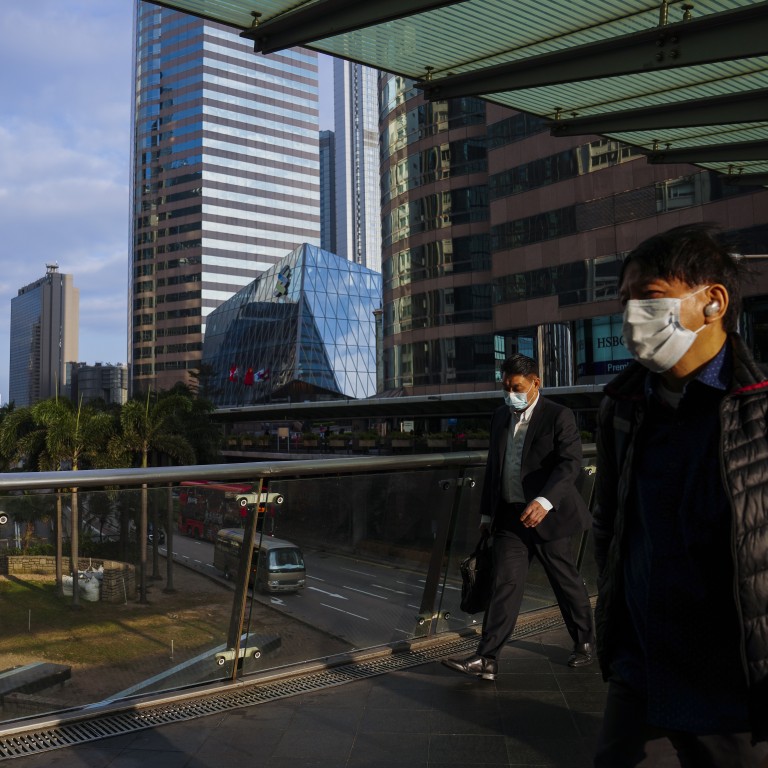
Hong Kong jobless rate edges down to 6.3 per cent, but pressure on labour market likely to increase amid fourth wave, official warns
- Latest rate still hovering near 16-year high of 6.4 per cent recorded in previous three-month period
- While consumption, tourism, and food and beverage sectors saw a brief reprieve, pressure is likely to ramp back up, welfare minister says
There were 244,300 people out of work between September and November, 13,500 fewer than during the three months from August to October, the Census and Statistics Department said on Thursday.
Secretary for Labour and Welfare Law Chi-kwong said labour market conditions remained weak between September and November, but had improved slightly in consumption- and tourism-related sectors, with their unemployment rate falling by 1.1 percentage points to 10.1 per cent. The food and beverage sector saw its unemployment rate fall from 14.8 per cent to 13.1 per cent.
However, Law warned: “Given the fourth wave of the local health crisis of late, the pressure on the labour market is likely to increase again in the near term.”

November marked the end of the government’s six-month salary subsidy initiative, and unions had warned of the repercussions for job security after the end of the HK$81 billion (US$10.3 billion) Employment Support Scheme.
George Leung Siu-kay, chief executive of the city’s largest business group, the Hong Kong General Chamber of Commerce, said on Thursday that joblessness would continue to worsen into the first quarter of next year following the end of the wage subsidy scheme.
The government has shown no intention of extending the scheme, which paid up to 50 per cent of employees’ salaries – capped at HK$9,000 a month – through their employers for six months.
The chamber projected that the city’s unemployment rate would hover around 7 per cent for all of 2020, estimating that figure would ease to 4.8 per cent in the coming year.
The record for the city’s unemployment rate stood at 8.8 per cent between May and August 2003, during the outbreak of severe acute respiratory syndrome (Sars).
“More firms will start to lay off people because they do not have sufficient financial capabilities to retain staff,” Leung said. “So, we are likely to see the unemployment rate continue to surge in the first quarter before you see a further decline towards the middle of next year.”
More than 60 per cent of 314 chamber members polled between November 9 and 13 said they had faced an annual decline in revenue in the first 10 months of the year.
Nearly a quarter of small to medium-sized enterprises (SMEs) and large corporations polled said their revenues dropped by at least 50 per cent year on year during the 10-month period, while 6 per cent of respondents indicated their takings had plunged by as much as 90 per cent.
The chamber’s members pointed to border closures and social-distancing restrictions as the top factors adversely impacting their businesses.

Overall, 29 per cent of SMEs and large corporations indicated they slashed headcount in 2020.
Nearly a third of respondents in the hospitality and tourism sectors said they planned to lay off staff and cut employees’ base pay over the next 12 months as the coronavirus pandemic continues to ravage the global travel industry.
Looking to next year, 40 per cent of those polled said they had a negative business outlook for 2021, while 20 per cent remained unsure about future prospects.
According to a survey conducted by the Hong Kong Federation of Trade Unions, the city’s largest pro-establishment labour group, nearly 80 per cent of those polled were either laid off, had a pay cut, or had been forced to take unpaid leave, while the same number of respondents were unhappy about the government’s performance in containing the pandemic.
More than a third feared losing their jobs if the health crisis dragged on.
The survey also found that the number of people out of work for less than a month more than doubled to 15 per cent from 7 per cent previously, which was likely to be related to the end of the wage subsidy scheme.


